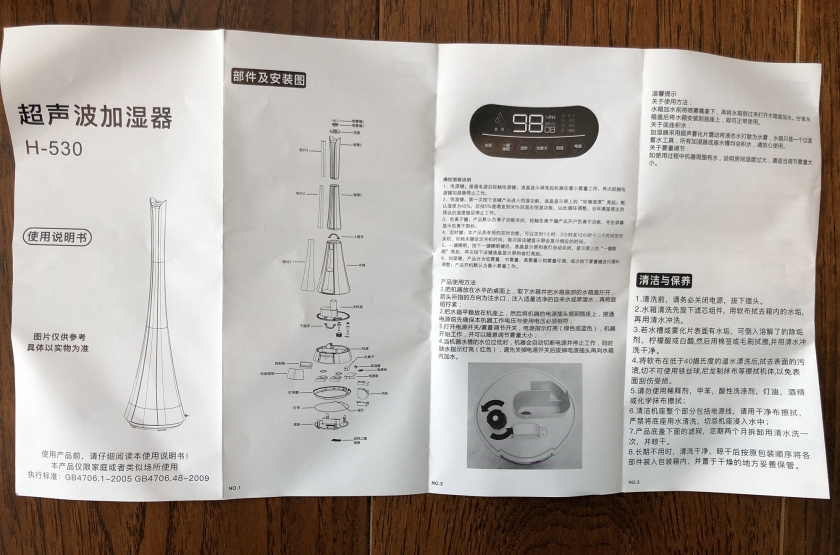Six reasons why mobile translation is poised to explode
- Carl Yao
- March 14, 2016
- 8,532 views

In 2012, Google received over two million search queries per minute globally; by 2014 that number more than doubled. That means Google was receiving three billion queries per day, working out to 90 billion queries a month or about 1.1 trillion searches per year. In terms of information size, Google’s search engine processes 20 petabytes of information now per day which is, according to Cost of Content Clutter Infographic, equivalent to half of all of the written works of mankind created since the beginning of recorded history. We are creating nearly as much information in a single, modern day, as we did in all of history. Now that’s an information explosion.
Excitingly, in May 2015, Google announced that it was getting more search queries on mobile devices than it did from people browsing on desktop computers. Google is not alone in witnessing a migration from desktop to mobile. For example, Facebook users share nearly 2.5 million pieces of content on Facebook every minute, and 78% of that content are posted from mobile globally. 85% of Twitter’s nearly 300,000 tweets a minute happen on mobile. All of Apple’s 50,000 App Store downloads are done on mobile devices. Mobile is now penetrating Instagram, YouTube, Amazon, Netflix and many more digital platforms. Mobile plays an increasingly critical role in today’s worldwide content creation and consumption.
The world needs good translation solutions that are able to keep up pace with the information explosion so those content can be shared across languages. Currently, the Web population is virtually silo-ed into regionalized content divided by countries and geo-locations. For example, user-generated content posted in the French version of Facebook usually stays in French and is not visible to users speaking other languages such as English or Chinese. The same is true for Japanese tweets in Japan. However, in an increasingly connected and globalized world, the ability to create and share information across languages is a necessity for global trade as well as prerequisite for better understanding diverse cultures.
How much content is translated today?
We estimate that the total number of words translated each year to be well over half a trillion with an annual spend of 38 billion USD. Although this number seems quite large by itself, if we divide it by the large number of spoken languages in the world, the number of translated words in each language dwindles significantly. English is by far the most translated language followed by Spanish, French, Chinese, German and Japanese (not necessarily in that order.) Unfortunately, this neglects a significant portion of the world’s most widely spoken languages. For example, India alone has 22 major spoken languages, each with millions of speakers, but currently experiences no significant translation. This shows the world needs modern translation solutions that can scale up to meet the global demand for the information age.
Additionally, mobile translation has been conspicuously missing and virtually non-existent. Despite the huge amount of content being generated through mobile devices, the amount of content translated directly on mobile by human translators compared to desktop computers is still miniscule. Although authoritative figures are not available, based on the fact that almost all of the translation software on the market are desktop based, mobile translation is effectively nonexistent. Our conservative estimate is that mobile translation today accounts for less than 1% of all translation activities by human translators.
 For this very reason alone, the potential impact of revolutions in the mobile translation sphere are massive. Until now, most translation software by human translators have been limited to desktop PCs. But with the introduction of mobile translation platforms like Stepes, this trend will begin to shift as more and more translation services are performed on mobile device like smartphones. For example, Tweets are usually limited to 140 characters which are ideally suited for mobile translation. The same is true for most major social media based networks such as Facebook, Amazon, Yelp, TripAdvisor, all of which depends on user input and crowd generated content. The mobile translation approach is ideally suited for allowing a large number of translators to translate that content into other languages in real time.
For this very reason alone, the potential impact of revolutions in the mobile translation sphere are massive. Until now, most translation software by human translators have been limited to desktop PCs. But with the introduction of mobile translation platforms like Stepes, this trend will begin to shift as more and more translation services are performed on mobile device like smartphones. For example, Tweets are usually limited to 140 characters which are ideally suited for mobile translation. The same is true for most major social media based networks such as Facebook, Amazon, Yelp, TripAdvisor, all of which depends on user input and crowd generated content. The mobile translation approach is ideally suited for allowing a large number of translators to translate that content into other languages in real time.
The following are six reasons why mobile translation is poised take off.
1. The market demands it
The world’s information explosion demands quick and affordable translation services on a large scale. The fact that Google machine translation receives 1 billion translation requests a year through its Google Translate platform is a clear indication of this enormous demand. Unfortunately, the current translation model with desktop only approach is no longer able to address market demand. This is why mobile translation powered by millions of translators from around the world is the only solution to delivering quality human translations on demand in all of the world’s major languages.
2. Ubiquity + Simplicity = Adaption
Compared to many new businesses that have taken off with the sharing economy as a result of the mobile revolution, translation has the advantage of being purely digital in nature. Text can be translated into any other languages electronically, without requiring any other auxiliary equipment to deliver the complete service end to end. This makes translation especially well-suited for the smartphone as it’s the only thing that the translator will need to deliver mobile translation service when and where they want.
According various industry statistics, 6.1 billion people will be using smartphones by 2020. The freedom of translating coupled with the ubiquitous mobile devices is a winning formula that will accelerate the growth of translating on mobile by human translators. Soon, people will begin to see more and more translators translating on their phones while on the road, riding a commuter train, or waiting in a restaurant.
3. The economic benefits
Some people may translate for fun, intellectual satisfaction, or as good cause for a non-profit project. Still, most people translate for money. Mobile translation has the potential to turn people’s smartphones into a rewarding source of cash flow. Mobile translation pays people to translate business documents and other content by the number of words they process.
This type of paid mobile translation is very different than many of the translation apps available today on Google Play or the Apple App Store. For the most part, existing mobile translation apps use machine translation to help the user get a sense of the foreign language text. Other apps are language dictionaries that also do not pay users for translation work. The same is true for the majority of all mobile apps, in fact, many apps even cost money for users to install or through in-app purchases. Stepes and other second generation mobile translation apps that allow translators to earn income and produce high quality human translations will become wildly popular as a result.
4. Huge pool of bilingual people
The world has a huge pool of bilingual talents with the capacity to partake in translation but never get opportunities to do it. These are people who speak two or more languages but also specialize in specific industry domains or subject matter fields. The combination of linguistic skills and subject matter expertise make them ideal for translating. The fact is that we all have some time to spare regardless if we are doctors, lawyers, engineers, financial consultants or gamers. This is a huge pool of untapped talent when it comes to accurate human translation for a variety of subject matter fields. However, until now, translation tools have been difficult to use and not easily accessible, leaving out many of these bilingual subject matter experts from translating. Mobile apps that make the translation process easy and accessible will finally change the dynamics, allowing many more bilingual experts to translate when and where they want and earn money.
5. Translation scalability
The world needs scalable translation solutions to meet the demand of rapidly growing digital content. The world is witnessing an information explosion. Digital content is being created constantly from a multiplicity of sources, increasing the world’s translation needs for both business growth and global development in areas like the arts, tourism, and diplomacy. Since much of this content creation happens quickly and in large scale, traditional localization models with complex workflows involving many human touch points is no longer efficient.
This is why real-time translation solutions that scale up easily are sorely needed. Mobile translation provides just such an agile solution by tapping into a global pool of translators on demand.
6. The translation industry needs it
The translation industry has relied on the same existing model for years and is long overdue for change. According to Don DePalma, Chief Strategy Office at Common Sense Advisory, “We see a phenomenon in translation as it shifts from a cottage industry to a much more technology-dependent one, with large volumes of content flowing in many directions… The data leads us to believe we are approaching a turning point, at which the language services industry will need to reinvent itself.”
The translation industry needs disruptive technologies, a game changer that combines the power of machine algorithms and people, to scale up translation service to meet global demand. Mobile translation will open up translation to the world’s large bilingual population, allowing them to provide quality translation service when and where they want for results that are better than ever. This is what we call Big Translation, a new approach to language that will finally break down the world’s language barriers.











